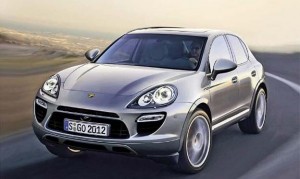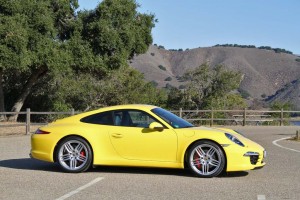
The planned Porsche Cajun will be one of a number of new models the maker is planning, company officials told TheDetroitBureau.com
Porsche intends to more than double its current global sales volume – while maintaining its position as the world’s most profitable carmaker – with the steady addition of new products.
The maker believes that much of its growth, going forward, will come from emerging markets like China, Russia and India, but it also believes there’s a significant opportunity to build demand in established markets such as the U.S. and Europe, company officials stressed during a California preview of the 2012 Porsche 911 Carrera S. (For a review of the 7th-generation 911, Click Here.)
“It is our objective to remain the world’s most profitable auto manufacturer,” said Porsche Board Member Wolfgang Hatz.
That doesn’t necessarily mean the German maker can keep up with a Toyota or Volkswagen – in terms of raw dollars – but on a percentage basis it is setting the benchmark, with a target of holding at a 15% Return on Sales, or ROS, and a Return on Investment, or ROI, of 21%.
Maintaining those sorts of numbers won’t be easy, but Porsche sees the opportunity to boost sales from last year’s 97,000 to around 200,000 by mid-decade. Much of that growth, acknowledged Hatz, the man in charge of Porsche R&D, will come from emerging markets such as Russia and China, where it is tapping into strong demand for luxury vehicles.
But the maker sees other ways to build volumes, as well. That includes updating the existing Porsche product line. The 2012 Porsche 911 is an example. The outgoing model has remained a surprisingly strong seller, even in its final year on the market. But with the 2012 update the maker expects to see the iconic sports car jump from 25% to 30% of the brand’s total volume in the U.S. – still Porsche’s largest market – according to August Achleitner, the 911 program manager.
But the real key to unlocking Porsche’s ambitious growth plan will come out of the maker’s vaunted product development center.
“Our objective is to have a new Porsche product every year,” revealed Hatz, either in the form of an all-new model or a major new variant of an existing product line.
Next in the queue is the Cajun – pronounced kai-YUHN in German – a downsized version of the Cayenne. (Click Here for more on the upcoming model.)
The maker is reportedly also developing an even less expensive sports car that would slot below the current Boxster and Cayman models. Beyond that, company officials aren’t talking, but design director Michael Mauer contends that while there are “some (market segments) that won’t fit the brand there are a lot of possibilities” for Porsche to consider.
“The most important thing,” says Mauer, a former Saab designer, “is meeting expectations and brand values.
The maker has proved the payoff for that strategy with models like the Cayenne sport-utility vehicle and 4-door Panamera sports sedan. Ironically, both models were initially heckled by the automotive media and Porsche purists but today they are the maker’s top two sellers worldwide, especially in China, where traditional sports car, like the Porsche 911, are still on the fringe.
Porsche is investing heavily in its future. It has spent 200 million Euros — $272 million at current exchange rates – to prepare for production of the 2012 911. It will invest another 500 million Euros, or $680 million, in its showcase plant in Leipzig – while adding another 1,000 jobs – to ready it for the launch of the Cajun.
Meanwhile, Mauer has doubled his design team, which will be backed up by a 150 million Euro, or $204 million, upgrade of the Porsche design and engineering center in Weissach, Germany.
“These financial investments are enormous,” especially considering the company’s still relatively modest sales volumes, acknowledged Hatz, “But they are central to remaining profitable in the future.”
That future isn’t entirely rosy. The maker made a failed, David-and-Goliath-style attempt to take over the bigger Volkswagen AG several years ago. In the end, the tables turned and Porsche won’t up agreeing to merge with VW, which will this year become the world’s largest automaker.
But that formal tie-up has been delayed indefinitely. Porsche is facing a number of lawsuits and even some potential criminal charges asserting it may have misled investors while running up hefty debts to fund the abortive VW takeover. (Click Here for more on the story.)
The fallout may come in the form of costly settlements and might yet scuttle the VW alliance – or limit its scope. But few expect it to be more than a brief setback. Barring some other significant setback, most observers expect Porsche to meet its growth targets.
“They’re realistic,” said Rebecca Lindland, auto analyst with IHS Automotive. “They’re benefiting from the trifecta of being popular in the U.S. and Europe – with the gravy coming from China.” Adding more successful models “would be pure incremental business for them.”

